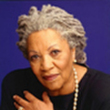Lost in the city: stories
Description
More Details
Clay, Caroline Narrator
Fernandez, Peter Jay Narrator
Floyd, Patricia R. Narrator
Free, Kevin R. Narrator
006219321
9780688115265
9780060795283
9780060566289
9781449892630
9780061748714
Table of Contents
From the Book - 20th anniversary ed.
Similar Titles From NoveList
Similar Authors From NoveList
Published Reviews
Publisher's Weekly Review
Young and old struggle for spiritual survival against the often crushing obstacles of the inner city in these 14 moving stories of African American life in Washington, D.C. Traveling street by street through the nation's capital, Jones introduces a wide range of characters, each of whom has a distinct way of keeping the faith. Betsy Ann Morgan, ``The Girl Who Raised Pigeons,'' finds inspiration in the birds she cares for on the roof of her apartment building. Middle-aged Vivian Slater leads a hymn-singing group in ``Gospel.'' The narrator of ``The Store'' labors to build up a neighborhood grocery; in ``His Mother's House,'' Joyce Moses collects photographs and cares for the expensive home her young son has bought her with his crack earnings. Depicting characters who strive to preserve fragile bonds of family and community in a violent, tragic world, Jones writes knowingly of their nontraditional ways of caring for one another and themselves. His insightful portraits of young people and frank, unsensationalized depictions of horrifying social ills make this a poignant and promising first effort. (June) (c) Copyright PWxyz, LLC. All rights reserved
School Library Journal Review
YA-- In these 14 stories set in black neighborhoods of Washington, DC in the '60s and '70s, Jones establishes a mood and a specific sense of place, but he also presents universal hopes and aspirations. Beautifully and economically written, the selections are filled with revealing details of poverty and degradation, and yet the protagonists are survivors who look to find hope and meaning in their lives. The haunting, grainy black-and-white photographs add to the real, though slightly hazy, atmosphere and reveal the underlying grit portrayed so evocatively in the prose. A more-than-worthwhile addition. --Susan H. Woodcock, Potomac Library, Woodbridge, VA (c) Copyright 2010. Library Journals LLC, a wholly owned subsidiary of Media Source, Inc. No redistribution permitted.
Library Journal Review
As Academy Award-nominated director John Singleton said of the violence in his film Boyz N the Hood , ``It's what's goin' down in America.'' Jones addresses similar sociological realities in his collection of 14 short stories, writing affectingly of African American life in our nation's capital. This is not the Washington of monuments, tourists, and the federal government; rather, it is the darker side of the city. Jones describes the harsh realities of life that exist for some African Americans in our society: a young aspiring singer shot dead by her boyfriend (the father of her child), a young man thieving to earn a living, a daughter desperately searching for the ``why'' in her mother's stabbing death. Although these experiences will be unfamiliar to many readers, Jones instills humanity in his characters and stories. He depicts people struggling to overcome adversity and survive in a dangerous world. For popular collections.-- Kimberly G. Allen, National Assn. of Home Builders Lib., Washington, D.C. (c) Copyright 2010. Library Journals LLC, a wholly owned subsidiary of Media Source, Inc. No redistribution permitted.
Kirkus Book Review
At once folksy and urbane, this debut collection of stories pulses with the lifeblood of the forgotten neighborhoods of Washington, D.C., where Jones's black people are less the victims of society than of fate and chance. What unites the multihued African-Americans here is their sense of loss, whether it's of a family member taken in casual violence, or of one's soul, lost to drugs or ambition. A parentless teenager in ``The Night Rhonda Ferguson Was Killed,'' a girl full of confidence and spunk, finds her world shattered by her best friend's senseless death. Similarly, a middle-class man, leading ``a civilized life'' in the city, is devastated when his 15-year- old daughter runs away from home, never to return (``A New Man''). A motherless girl fills the void in her life with pigeons, until they too die or abandon the dying neighborhood (``The Girl Who Raised Pigeons''). Jones's unsparing view encompasses the hustler of ``Young Lions,'' a petty crook who enlists his loving girlfriend in a cruel scam; the middle-aged mother in ``His Mother's House,'' who ignores the source of her drug-dealing son's beneficence; and the high-powered lawyer in the title piece, who anesthetizes herself from her past with cocaine and passionless sex. But there's struggle, uplift, and survival in adversity here as well. In ``The Store,'' an unambitious young man grumbles through menial jobs, until he ends up attending Georgetown, in spite of himself. A dignified divorced woman keeps her family together in ``An Orange Line Train to Ballston.'' And a grown-up brother and sister cope differently with their father, who has spent most of their lives in jail for murdering their mother (``The Sunday Following Mother's Day''). Jones unerringly captures the quiet stateliness of elderly women in a trio of stories, culminating in ``Marie,'' which is his most self-reflexive piece. A skillful, elegiac collection, with remarkably little sociology.
Library Journal Reviews
As Academy Award-nominated director John Singleton said of the violence in his film Boyz N the Hood , ``It's what's goin' down in America.'' Jones addresses similar sociological realities in his collection of 14 short stories, writing affectingly of African American life in our nation's capital. This is not the Washington of monuments, tourists, and the federal government; rather, it is the darker side of the city. Jones describes the harsh realities of life that exist for some African Americans in our society: a young aspiring singer shot dead by her boyfriend (the father of her child), a young man thieving to earn a living, a daughter desperately searching for the ``why'' in her mother's stabbing death. Although these experiences will be unfamiliar to many readers, Jones instills humanity in his characters and stories. He depicts people struggling to overcome adversity and survive in a dangerous world. For popular collections.-- Kimberly G. Allen, National Assn. of Home Builders Lib., Washington, D.C. Copyright 1992 Cahners Business Information.
Publishers Weekly Reviews
Young and old struggle for spiritual survival against the often crushing obstacles of the inner city in these 14 moving stories of African American life in Washington, D.C. Traveling street by street through the nation's capital, Jones introduces a wide range of characters, each of whom has a distinct way of keeping the faith. Betsy Ann Morgan, ``The Girl Who Raised Pigeons,'' finds inspiration in the birds she cares for on the roof of her apartment building. Middle-aged Vivian Slater leads a hymn-singing group in ``Gospel.'' The narrator of ``The Store'' labors to build up a neighborhood grocery; in ``His Mother's House,'' Joyce Moses collects photographs and cares for the expensive home her young son has bought her with his crack earnings. Depicting characters who strive to preserve fragile bonds of family and community in a violent, tragic world, Jones writes knowingly of their nontraditional ways of caring for one another and themselves. His insightful portraits of young people and frank, unsensationalized depictions of horrifying social ills make this a poignant and promising first effort. (June) Copyright 1992 Cahners Business Information.
School Library Journal Reviews
YA-- In these 14 stories set in black neighborhoods of Washington, DC in the '60s and '70s, Jones establishes a mood and a specific sense of place, but he also presents universal hopes and aspirations. Beautifully and economically written, the selections are filled with revealing details of poverty and degradation, and yet the protagonists are survivors who look to find hope and meaning in their lives. The haunting, grainy black-and-white photographs add to the real, though slightly hazy, atmosphere and reveal the underlying grit portrayed so evocatively in the prose. A more-than-worthwhile addition. --Susan H. Woodcock, Potomac Library, Woodbridge, VA Copyright 1993 Cahners Business Information.































